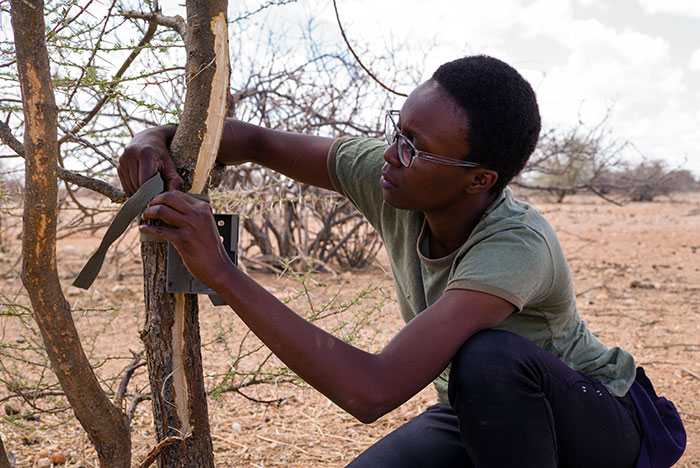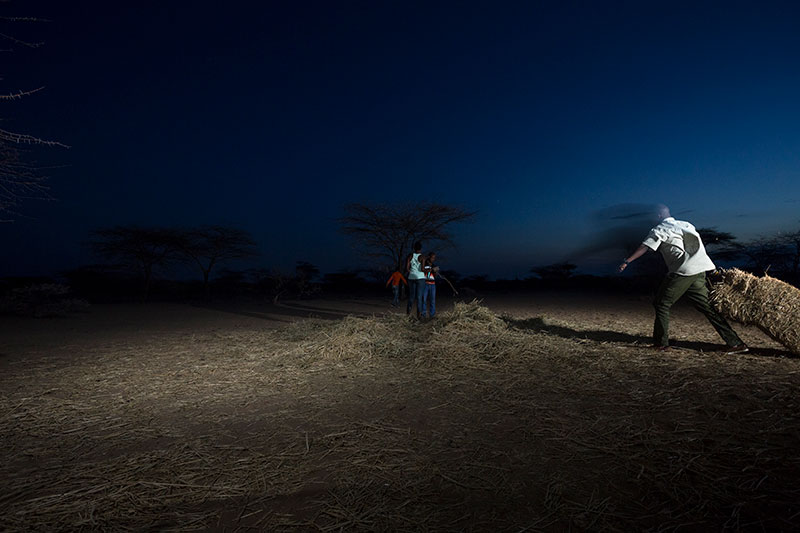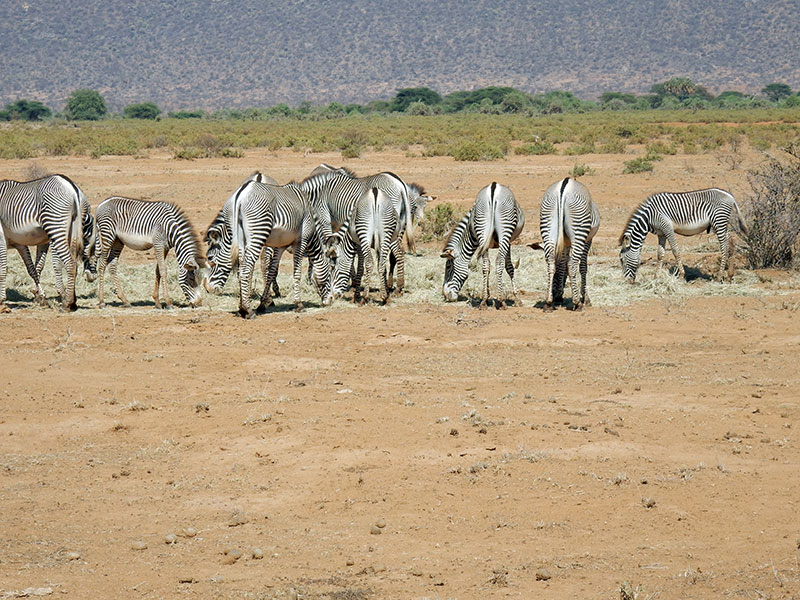© Heath Holden
In 2017 and in 2019, Kenya experienced prolonged drought conditions with the northern and central regions being particularly hard hit. As a result, we had to take practical measures on the ground to ensure that the Grevy’s zebra in these drought-stricken regions could maintain body condition and make it through the tough times. The Grevy’s Zebra Trust, with support from the national Grevy’s Zebra Technical Committee, undertook an intensive program of supplementary feeding and water point management in all our regions of operation, the latter of which benefits not only the Grevy’s zebra but other wildlife struggling through the drought. We follow strict guidelines developed by the Grevy’s Zebra Technical Committee.
Due to the timely implementation of these measures, we were able to minimize losses during a period of exceptional stress for Grevy’s zebra. This intervention requires a lot of resources both financially and from our team’s time. However, if we are to avoid losing significant numbers of Grevy’s zebra during times of crisis, we must take proactive measures. We are therefore dedicated to ensuring the survival of as many Grevy’s zebra as possible by supporting them during times of crisis, whilst maintaining our long-term focus on achieving healthy rangelands.
With the help of hay monitors employed from the local communities, we established various feeding sites in areas where the forage was severely depleted, and before the zebra could show signs of losing body condition we provided them with fresh hay at regular intervals.
Supplementary feeding sites are monitored with camera traps so that we can track whether Grevy’s zebra are using the hay and to what extent other species are also benefiting.



